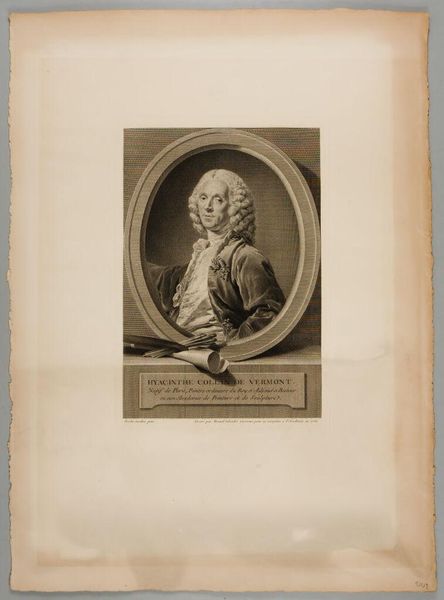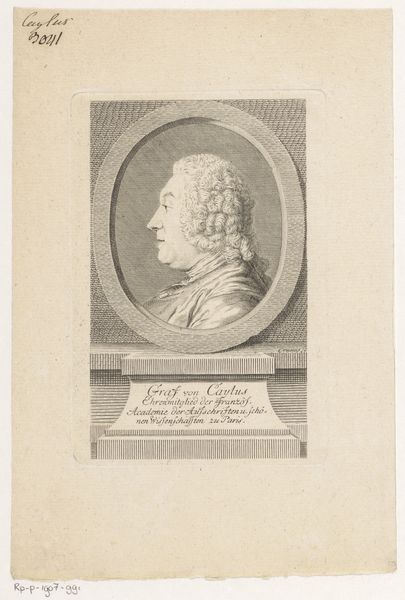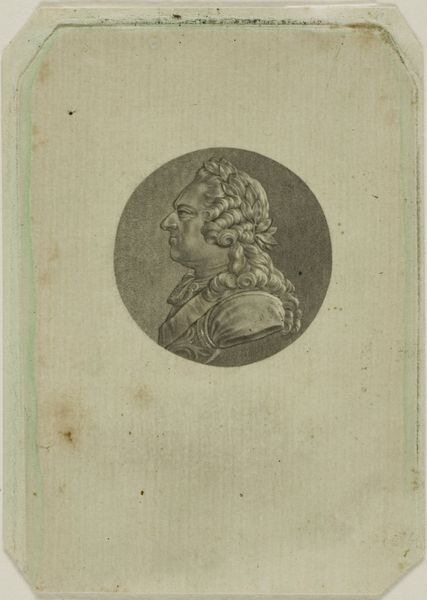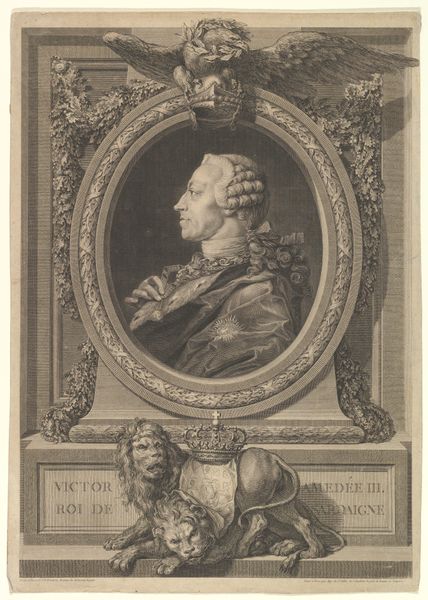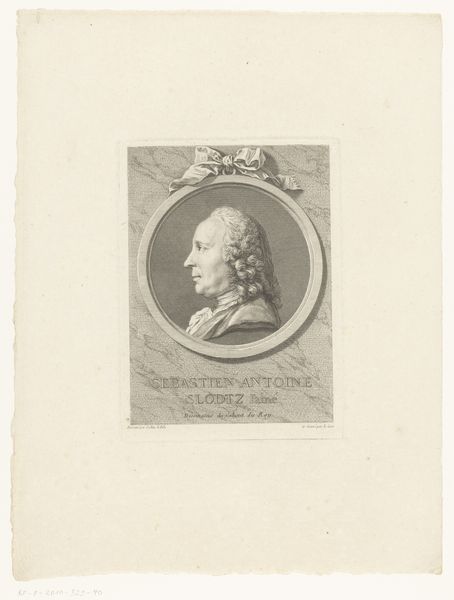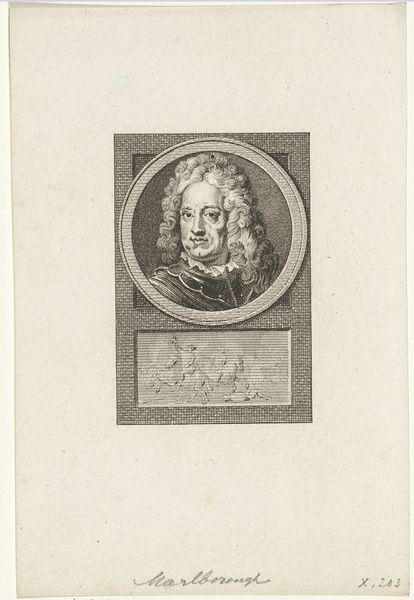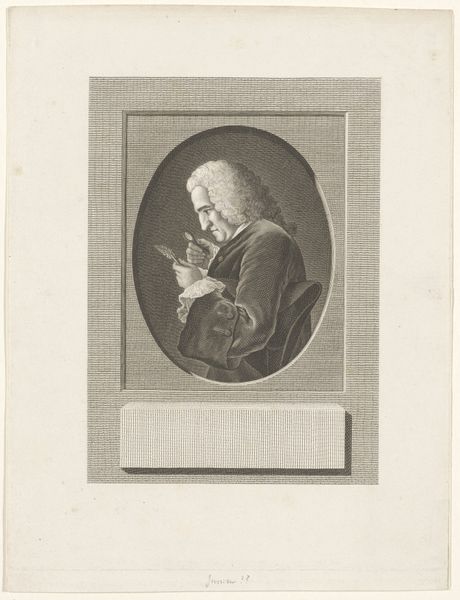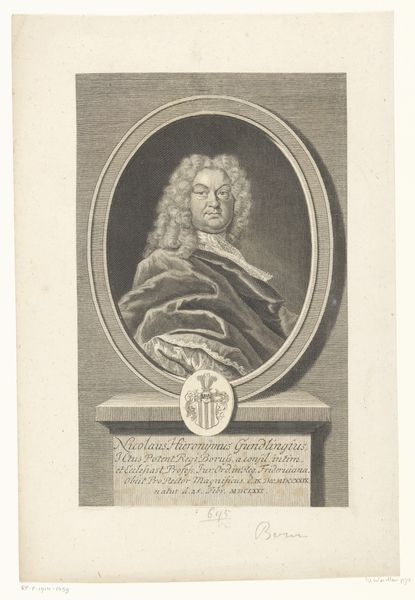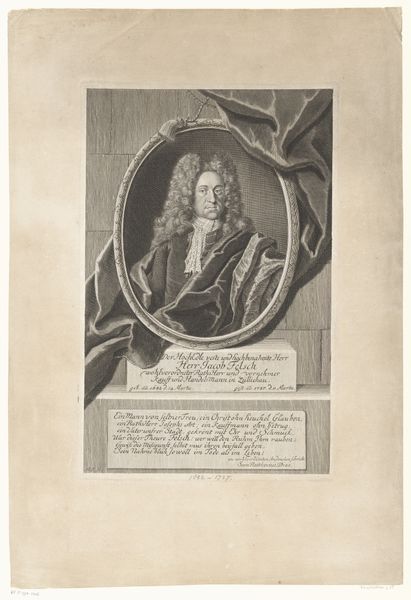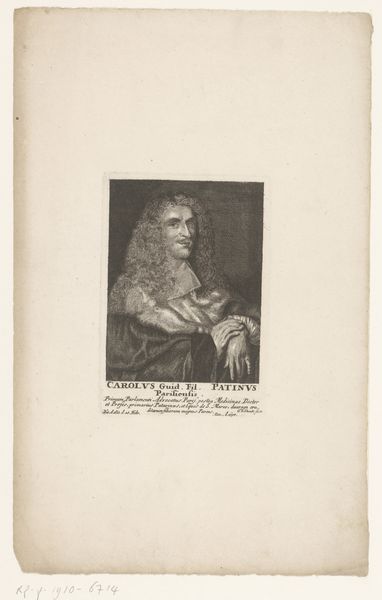
print, engraving
# print
#
classicism
#
history-painting
#
academic-art
#
engraving
Dimensions: 200 mm (height) x 150 mm (width) (plademaal)
Curator: Wilhelm Heuer created this print, "Ludvig Holberg," in 1816. It's currently held at the SMK, the Statens Museum for Kunst. It's an engraving, exhibiting that distinct classicism style typical of academic art from the period. What's your immediate impression of it? Editor: There’s a somber mood, almost melancholy, that the limited tonal range reinforces. The detailed, almost severe portrait contrasted with those playful figures below...it feels very self-aware. Curator: It’s interesting you say that. From my perspective, the print speaks volumes about the status of printmaking at the time. The precise lines of the engraving emphasize technical skill and a mastery of process meant for wider distribution. Think of the labour involved in this craft—a carefully designed image made for a growing reading public. Editor: And the image is a deliberate one. Holberg, the figure at the top, is depicted as a classical bust, imbuing him with a sense of timeless importance. His stern profile and elaborate wig speak of intellectual authority and a commitment to reason and order. Curator: Precisely. Heuer would be aware of the materials. Holberg had achieved iconic status, this print becomes a means of manufacturing that image through ink and paper to perpetuate the ideal of him to consumers. The cheaper, accessible media allowed the propagation of certain values, a means of distribution to an eager, paying audience. Editor: Note too the cherubs or putti at the bottom. One holds a mask, perhaps alluding to Holberg’s dramatic works or the broader themes of comedy and tragedy. Masks, historically, are complex symbols – disguises, yes, but also revealers of deeper truths. The presence of putti adds another layer – innocent revelry. Curator: I hadn’t considered that particular contrast, but you're right. The means by which the putti were made, for whom and why becomes especially interesting when contextualizing the work within art production. Editor: To me, the artwork hints at the complexity of Holberg’s legacy, balanced between seriousness and satire, enduring intellect, and the transient nature of theatrical performance. I will think about that longer than I will the print medium as a means of material production. Curator: Yes, indeed. It's striking to realize that print media offered both artistry and mass appeal at a pivotal moment in social change and cultural access. Editor: Thank you. Seeing it in that light offers an entirely different understanding.
Comments
No comments
Be the first to comment and join the conversation on the ultimate creative platform.

